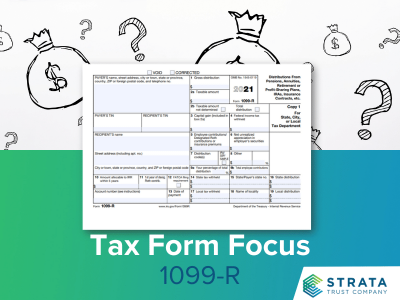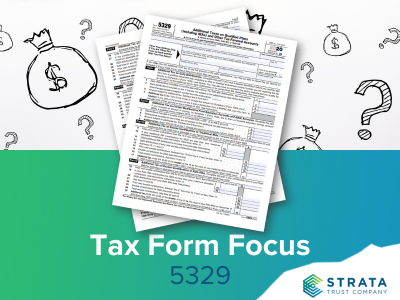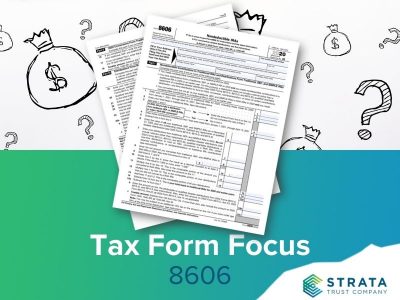One of the primary benefits of saving for retirement in an IRA is that you have control over your account and your investments. You can move your IRA assets from one IRA custodian to another for any reason, such as gaining access to alternative investment options or additional custodial services. But the tax laws prescribe certain rules that you must follow when moving IRA assets if you want to preserve the tax-qualified status of your savings and avoid additional tax. Here are 10 tax-smart tips for moving your IRA assets to another IRA.
Moving assets with a direct transfer:

1. Transfers are a simple way to move assets between similar IRAs.
A direct movement of assets from IRA to IRA is called a transfer – not a rollover. Assets can be transferred between IRAs held by the same custodian or by two separate financial institutions. If your current custodian issues a check for you to bring to your new custodian, it must be made payable to the receiving custodian for the benefit of the IRA. This titling prevents you, the IRA owner, from having access to those assets. Because the IRA assets stay in the control of the IRA custodians, there is no distribution taking place and thus no tax consequences. A transfer is not reported to the IRS.

2. Moving to the same type of IRA avoids tax consequences.
Moving your IRA assets to the same type of IRA they are coming from will avoid any tax consequences. This means moving assets from a Traditional IRA to a Traditional IRA, a SIMPLE IRA to a SIMPLE IRA, and a Roth IRA to a Roth IRA. You can also move from a SIMPLE IRA to a Traditional IRA, but you must wait until two years have passed from the date of your first contribution under the SIMPLE IRA plan.

3. Transfers are a flexible option for moving assets.
You may choose to transfer the entire IRA balance or just a portion of the IRA, and you may transfer cash or assets, depending on the type of investments the receiving custodian will hold. The IRS does not limit the timing or number of transfer transactions you may perform. IRA custodians, however, may apply transaction and investment re-titling fees and timing restrictions.

4. RMDs must be taken and may be transferred.
Because transfers are not considered distributions from the IRA, you may transfer any amount from IRA to IRA each year even if you have not yet satisfied your required minimum distribution (RMD). (RMDs are minimum annual payments that must begin when you reach age 72, or age 70½ if you reached that age by December 31, 2019). If you owe an RMD for the year, you must still take the payment on time, but you can take it from any of your Traditional or SIMPLE IRAs, depending on the liquidity of the IRA’s investments.

5. Moving assets between dissimilar IRAs may trigger taxation.
Any movement between a Roth IRA and a Traditional IRA is not considered a direct transfer, and there are almost always tax consequences associated with the move. For example, a movement of assets from a Traditional IRA to a Roth IRA may be a recharacterization of a current-year contribution, which will affect your tax deductions on your income tax return. A movement from a Traditional IRA to a Roth IRA could also be a conversion to change pre-tax assets to after-tax assets, which results in taxable income for the year of the conversion.
Moving assets with a rollover:

6. Beware the tax consequences of a rollover.
In a rollover between IRAs, assets are distributed from one IRA, payable to you, the IRA owner. You then have the option of keeping the distributed assets or rolling over some or all of the distribution to another IRA or back into the same IRA. Distributions from Traditional and SIMPLE IRAs are generally pre-tax assets and taxable to you in the year you take them out of the IRA.
Your IRA custodian must allow you to choose whether to have federal income tax withholding apply to your distribution. You may choose to waive withholding, or withhold 10% or an amount greater than 10%. Your custodian will withhold 10% if you do not make an election. Withholding is remitted to the IRS as a prepayment of your tax liability for that taxable distribution. (State withholding may also apply.)
You must include the amount of the distribution, including the amount withheld, in your taxable income for the year, unless the assets are rolled over properly. If you are younger than age 59½, the entire amount of your taxable distribution will also be subject to the 10% early distribution tax, unless you meet an exception.
IRA-to-IRA rollovers are reported to the IRS. The amount distributed will be reported on Form 1099-R, and the amount contributed as a rollover will be reported on Form 5498.

7. Rollovers must be completed within 60 days to avoid tax consequences.
If you deposit 100% of the amount distributed from your IRA within 60 days from the day you received the distribution, you will not owe any taxes on the distribution. If you had any amount withheld for taxes, you must make up this amount out of pocket to complete a 100% rollover. You may receive some or all of that withholding back from the IRS when you file your income taxes for the year. The taxable portion of any amounts not rolled over must be included in your income (except portions attributable to nondeductible contributions, rollovers of after-tax assets, and Roth contributions or qualified distributions).

8. Only one rollover may occur every 12 months.
Because IRA owners are given the right to use their IRA assets for up to 60 days in a rollover transaction, the tax laws limit how often IRA owners may conduct an IRA rollover – once every 12 months. If you take a distribution from an IRA and roll it over to another IRA, you must wait one year before rolling over another distribution from any of your IRAs.

9. Only the same assets may be rolled over.
If you distribute assets from the IRA without liquidating it, only that same asset is eligible to be rolled over into an IRA. You generally cannot sell assets outside of the IRA and roll over the cash proceeds.

10. Not all assets are eligible for rollover.
Most distributions from an IRA are eligible for rollover, but certain ones are not. Amounts that are distributed as an excess contribution are not eligible for a rollover. In addition, you cannot roll over an RMD. You may transfer your full or partial IRA balance even if an RMD is due (provided you take the RMD from the receiving IRA by the applicable deadline).
Upon depositing your rollover assets with the IRA custodian, you will be required to sign an irrevocable rollover election, attesting that the assets are eligible to treated as a rollover (and you have met the 60-day and 12-month restrictions).
For More Information
STRATA Trust would be happy to assist you in completing an IRA transfer or rollover. If you have additional questions check out our direct transfer and rollover FAQs. If you would like to begin an IRA transfer to STRATA, please fill out our IRA Transfer Request form.











